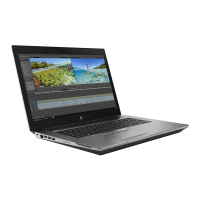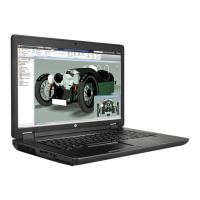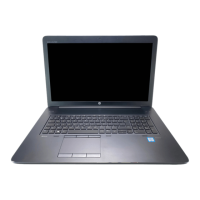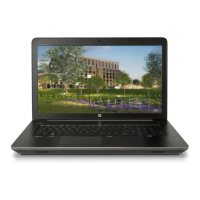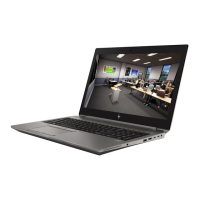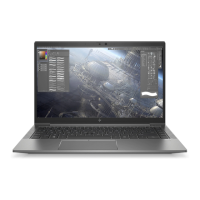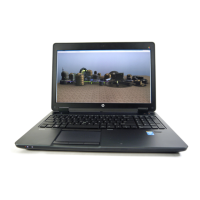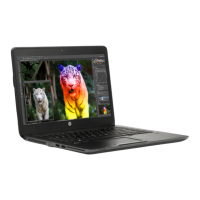Table 7-51 Issues, possible causes, and xes
Items Procedures
Symptoms
● Fan never stops running
● Generates heat
● Decreased computer performance
Possible causes
● BIOS not up to date.
● Thermal condition (fan, air ow)—fan might not be defective but must run constantly to
remove excess heat generated by electrical components.
● Inappropriate conguration.
Troubleshooting steps
General actions
1. Verify whether BIOS is set to Fan Always on while on AC Power F10 Setup. When booting
the computer, press f10 to open Setup, and then select Advanced > Built-In Device
Options Menu.
2. Update BIOS and drivers (4. Update BIOS and drivers on page 107) and reset BIOS to
default. BIOS can implement new fan characteristics and updates for other components.
3. Perform a hard reset (8. Hard reset on page 115). Performing a hard reset can reset
recorded thermal values in memory.
Thermal-related issue
1. Verify that fan is spinning. Reseat fan cable before moving to next step.
a. Check fan and connection. Reseat fan cable.
b. Be sure that no obstructions or dust are in heat sink fan, heat sink n, or vent.
c. Test fan using HP PC Hardware Diagnostics (UEFI) tool (6. HP Hardware Diagnostics
and Tools on page 109). Be sure that the fan is not producing loud noise and that
fan blades spin correctly.
d. Test with a veried working fan.
e. Replace the fan.
2. Verify thermal solution
Use Thermal Monitor tool (available only to authorized service providers and technicians)
(HP Thermal Monitor on page 111) to run stress test (processor and GPU) and verify that
thermal sensors are within limits after thermal condition is serviced.
ENWW Common issues and possible solutions 165
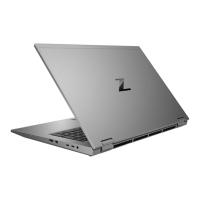
